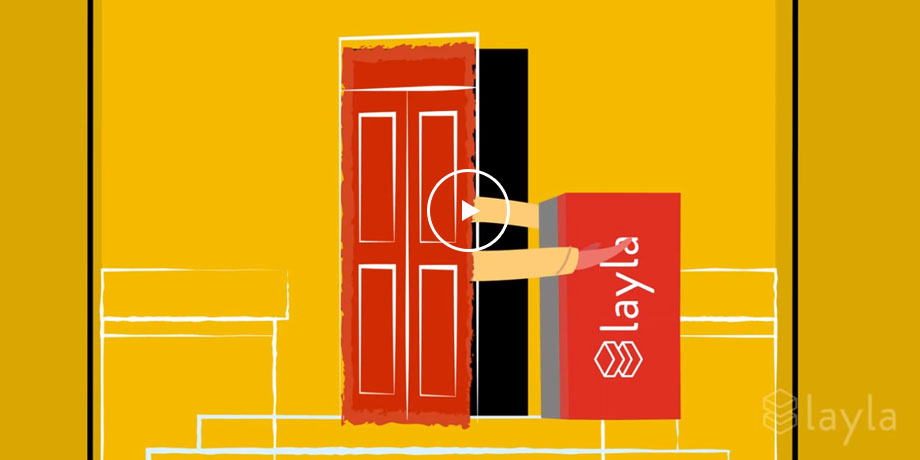There are a number of ways to address PTSD with your doctor, therapist, and other professionals. And there are also things you can do at home to ease the symptoms. Weighted blankets for PTSD are one way to address a common problem for people: lack of sleep.
By sleeping under a heavier blanket, your body may benefit from Deep Touch Pressure that lulls the body into fitful sleep and calms the nervous system. If you’ve been struggling to get good shut-eye after a trauma, you may want to consider making a weighted blanket a new part of your sleep routine.
Understanding PTSD
Post-Traumatic Stress Disorder can happen to people of all ages. According to the Mayo Clinic, both people who experience and people who witness a trauma may ultimately suffer from symptoms of PTSD. Trauma can include things like car accidents, domestic abuse, or violence in the battlefield.
Everyone takes some time to recover after experiencing a traumatic event, but PTSD represents a condition in which the person isn’t able to recover with time and self-care.
Panic disorder, panic attacks, negative thoughts, and lack of sleep can all result from untreated PTSD. And at least one study showed that veterans are far more likely than civilians to have nightmares. While 52% of Vietnam Veterans in the study said they have nightmares on a pretty regular basis, only 3% of non-veterans said the same.
If the aftermath of a traumatic event includes distress lasting more than a month, or your recovery interfering with your daily life, you may be experiencing PTSD. There are a variety of clinical treatments and lifestyle changes that can help, including in-person therapy, medications, and weighted blankets for PTSD.
3 Common Symptoms of PTSD
PTSD manifests differently in different people. However, there are some common signs that you might be suffering from the disorder. According to the Anxiety and Depression Association of America, symptoms of PTSD may not arise until months or even years after a traumatic event – so it’s important not to brush off symptoms just because time has passed and you assume you’re “over it”.
People are generally diagnosed if they experience some of these common symptoms for at least one month:
1. Flashbacks
People with PTSD often re-experience a traumatic event through flashback memories. These distressing memories can be triggered by sights, sounds, or other things that remind them of the original event. For veterans, loud noises or sudden movements can reignite memories of a trauma experienced during their time in service. Sometimes flashbacks happen in waking hours, and other times they show up in nightmares.
2. Avoidance of Triggers
Another symptom of PTSD is an avoidance of the places, people, experiences, and other things that can cause a flashback. A person will instinctually avoid reminders of their trauma, which can ultimately limit the types of activities that feel safe.
3. Difficulty Sleeping and Concentrating
PTSD also causes an increased arousal. It can feel as if your body is always on alert for signs of danger or reminders of the trauma. One way this symptom manifests is in insomnia, as well as general feelings of irritability and anger that are hard to shake. Using a heavier blanket for anxiety may calm your body’s over–arousal and depress your alertness to a comfortable level.
PTSD Treatment Options
The good news is that PTSD can be treated. In fact, someone with PTSD can go on to have a joyful life and return to their favorite activities. It does take time and treatment, though. The National Center for PTSD (a division of the U.S. Department of Veteran Affairs) recommends seeking one of these common treatments if you recognize symptoms of PTSD.
Prolonged Exposure
Exposing yourself to the feelings, activities, and places you’ve been avoiding can help you reduce your symptoms. You will gradually approach trauma-related memories and confront challenges, like returning to a place that has triggered an episode.
Cognitive Processing Therapy
This type of therapy, also called CPT, typically consists of 12 sessions. You and a psychotherapist will work to reframe the negative thoughts you have related to your trauma. Over time, changing your thoughts can change how you feel and your physiological responses.
EMDR
Eye Movement Desensitization and Reprocessing sounds like a mouthful, but it’s actually less complicated than it sounds. Some research suggests that talking about a trauma while moving your eyes back and forth quickly allows your brain to reprocess the memory. Instead of associating it with panic and fear, you may learn to think about the trauma while still feeling safe.
How Weighted Blankets for PTSD Can Help
Lifestyle changes can be very beneficial to PTSD recovery. In consultation with your mental health team, you may want to explore the ways that you can set yourself up for a successful recovery through lifestyle choices.
Mayo Clinic recommends connecting with other trauma survivors, beginning an exercise regimen, and turning to the social support of family and friends.
Focusing on good sleep is also helpful. Even someone without PTSD can become more irritable and anxious during the day when they suffer from insomnia. For people with the condition, bad sleep habits can exacerbate some of the most common symptoms.
Unfortunately, sleep disorders are not uncommon for veterans. In 2015, more than 20% of veterans (about 1.2 million) being treated by the VA had been diagnosed with a sleep disorder in the last two years.
This is where a weighted blanket for veterans comes in.
There are several ways weighted blankets may help you achieve better, more restful sleep:
- Deep Touch Pressure (DTP). This therapeutic technique is used for a variety of purposes, many of them related to anxiety. By grounding your body and providing even touch across the skin (like a big hug), your nervous system may relax. Deep Touch Pressure provided by weighted blankets for PTSD may also lower your heart rate.
- Decreased Cortisol. When you’re in the heat of a fight or flight response, your body produces a lot of a stress hormone called cortisol. You may even produce a lot of cortisol just from every day stress. Weighted blankets can reduce the amount of cortisol you create, thus helping you relax enough to drift into fitful sleep.
- Increased Serotonin. DTP may also increase the amount of serotonin in your body, a neurotransmitter thought to relate to feelings of contentment. In turn, you could find it easier to drift off rather than lay away with anxious thoughts.
- Fewer Movements. Finally, being under a hefty blanket makes it harder to toss and turn. The general recommendation for weighted blanket selection is that it be about 10% of your body weight – no small figure. Being under 15-20 pounds could keep you in one place for longer and lead to more uninterrupted sleep.
If you suffer from PTSD, blanket and pillow selection may not seem like they’d make a difference. However, on the contrary, weighted blankets for PTSD are a promising addition to any robust healthy plan aimed at reducing symptoms.
Try the Layla Weighted Blanket for PTSD Relief
If you’re seeking out one of the best weighted blankets for PTSD, you’ve come to the right place. The Layla Weighted Blanket is full of 100% glass beads that are evenly distributed to provide comfort and pressure equally across your body.
Not only does our trauma blanket have a solid interior, but the exterior is made of the good stuff, too. One side has soft cotton and the other is covered in plush, minky fabric. It’s even machine washable, so you don’t have to worry about keeping it clean.
Layla Weighted Blanket is also available in a variety of sizes and weights. You can get the blanket in Twin size 48” x 72” at 15lbs, Queen size 60 x 80 at 20lbs, or King size at 80 x 87 and 25
The general recommendation is 10% of your body weight, but some people may be more comfortable under heavier blankets. The good news is that Layla offers a 30-night trial period. If you try it and decide you need a different size and weight, just let us know and send it back for free.
Want to learn more? Get to know the pros and cons of a weighted blanket and talk to your doctor about using it as a part of your PTSD treatment plan.



